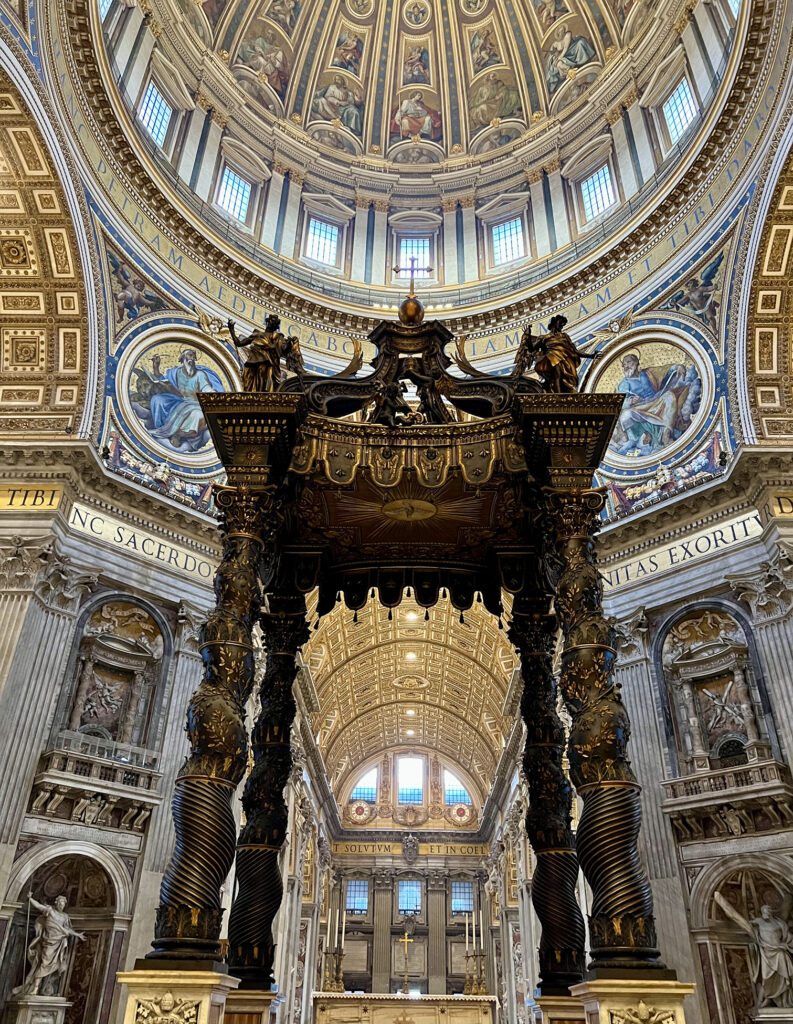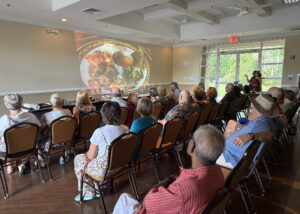The Vatican has been an independent state since February 11, 1929, and is known as Vatican City. The Lateran Treaty resolved the “Roman Issue” between the church and the Italian state. Pope Julius II initiated the construction of the new basilica, entrusting Donato Bramante with the design of the grand architectural project, which took 176 years to complete.
Michelangelo, Raphael, Antonio da Sangallo, Antonio del Pollaiuolo, Giuseppe Momo, and Gian Lorenzo Bernini are renowned Italian artists and sculptors who created masterpieces that can be admired in the Vatican Museum, Sistine Chapel, and Basilica of St. Peter.

The Vatican Palaces constitute a cluster of buildings whose construction commenced in the Middle Ages and continued under the patronage of numerous popes. The entrance is flanked by two larger statues of Michelangelo and Raphael, which support the coat of arms of Pius XI, during whose pontificate they were constructed. The Vatican Apostolic Library was established by Sixtus IV in 1475 and situated in the long wing created by Pirro Ligorio in 1587 at the behest of Sixtus V.
Between 1475 and 1483, Sixtus IV commissioned Giovani de Dolci to construct the Sistine Chapel. He intended for his essential building to be architecturally isolated, virtually inaccessible from the exterior, as if it were fortified.
The decoration of the chapel commenced in 1482, transforming the austere, nearly barren space into a priceless gallery showcasing 15th and 16th century Italian Renaissance paintings by esteemed artists, including Pietro Perugino, Sandro Botticelli, Domenico Ghirlandaio, and Cosimo Rossellini, which served to illustrate the parallel narratives of the Old and New Testaments, facing one another on the central strip of both walls.
The left, with Moses (Old Testament) on one side and the life of Christ (New Testament) opposite, was painted parallel to each other on the two lateral walls. Thus, the journey of Moses, attributed to Pinturicchio, corresponds on the opposite side of the baptism of Jesus, which was indeed painted by him, in addition to the classical Christian symbolism.
The following pictures are the work of Botticelli; the biblical series on the left includes Moses with Jethro’s daughters, and in the Gospel sequence on the right, the temptation of Christ and the healing of the Leper. Crossing of the Red Sea by Cosimo Rosselli, dedicated to the Old Testament, is the calling of the first Apostles by Domenico Ghirlandaio. Michelangelo’s artistic journey was profoundly shaped by his mentor, Ghirlandaio.
Upon entering St. Peter’s Basilica in Vatican City, designed by Gianlorenzo Bernini, the chief architect, a grand plaza with columns shaped like keys referencing Jesus’s remark about handing the keys to St. Peter becomes apparent. This ranks among Bernini’s greatest achievements and can only be fully appreciated in person. Similarly, one of Bernini’s most notable sculptural creations, located inside the basilica, is noteworthy. The 94-foot-tall baldacchino, a bronze canopy rising above the basilica’s high altar, is remarkable. Its columns, rather than being simple vertical supports, twist upward, and the top is adorned with intricate gilded designs and allegorical figures.




